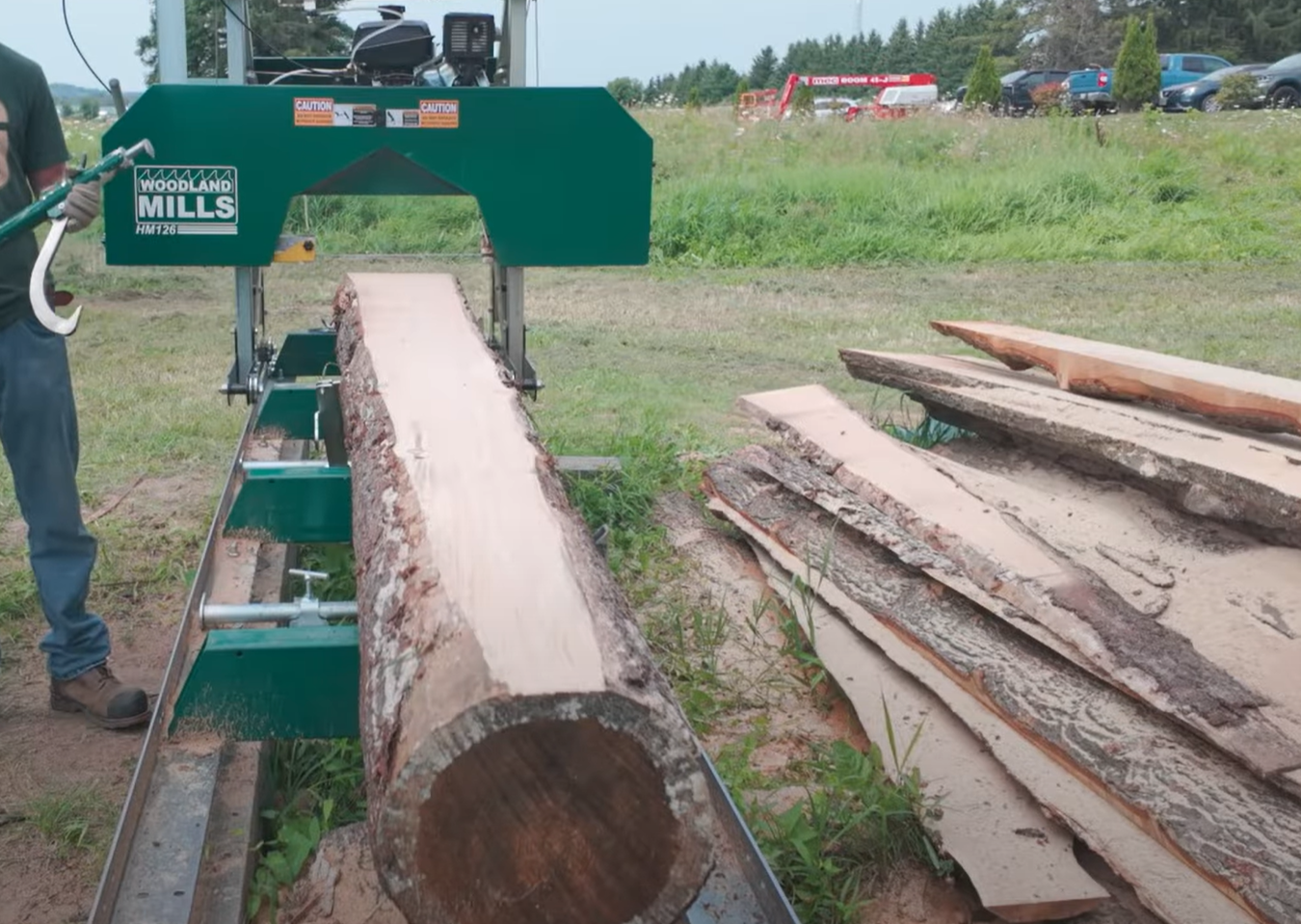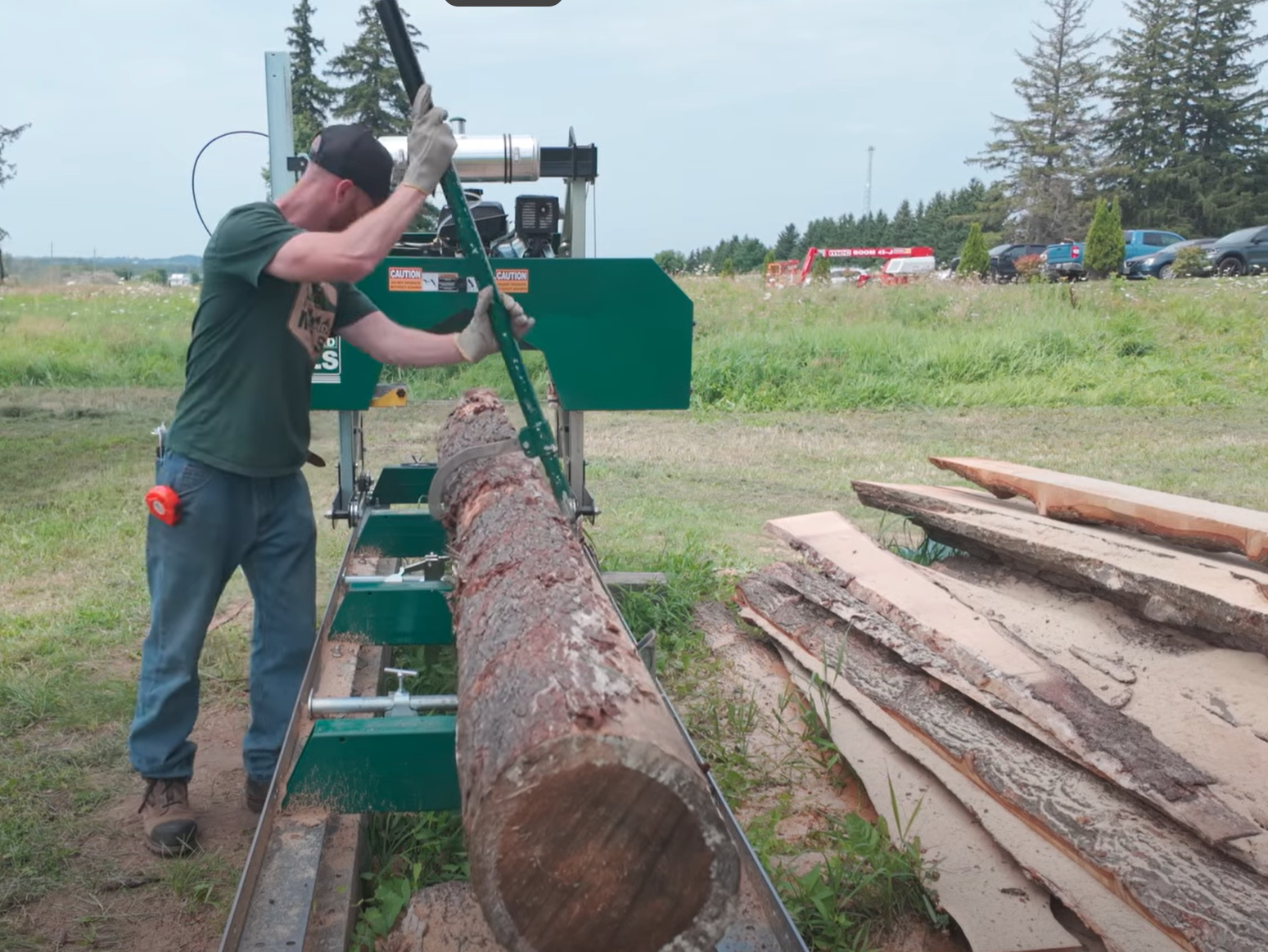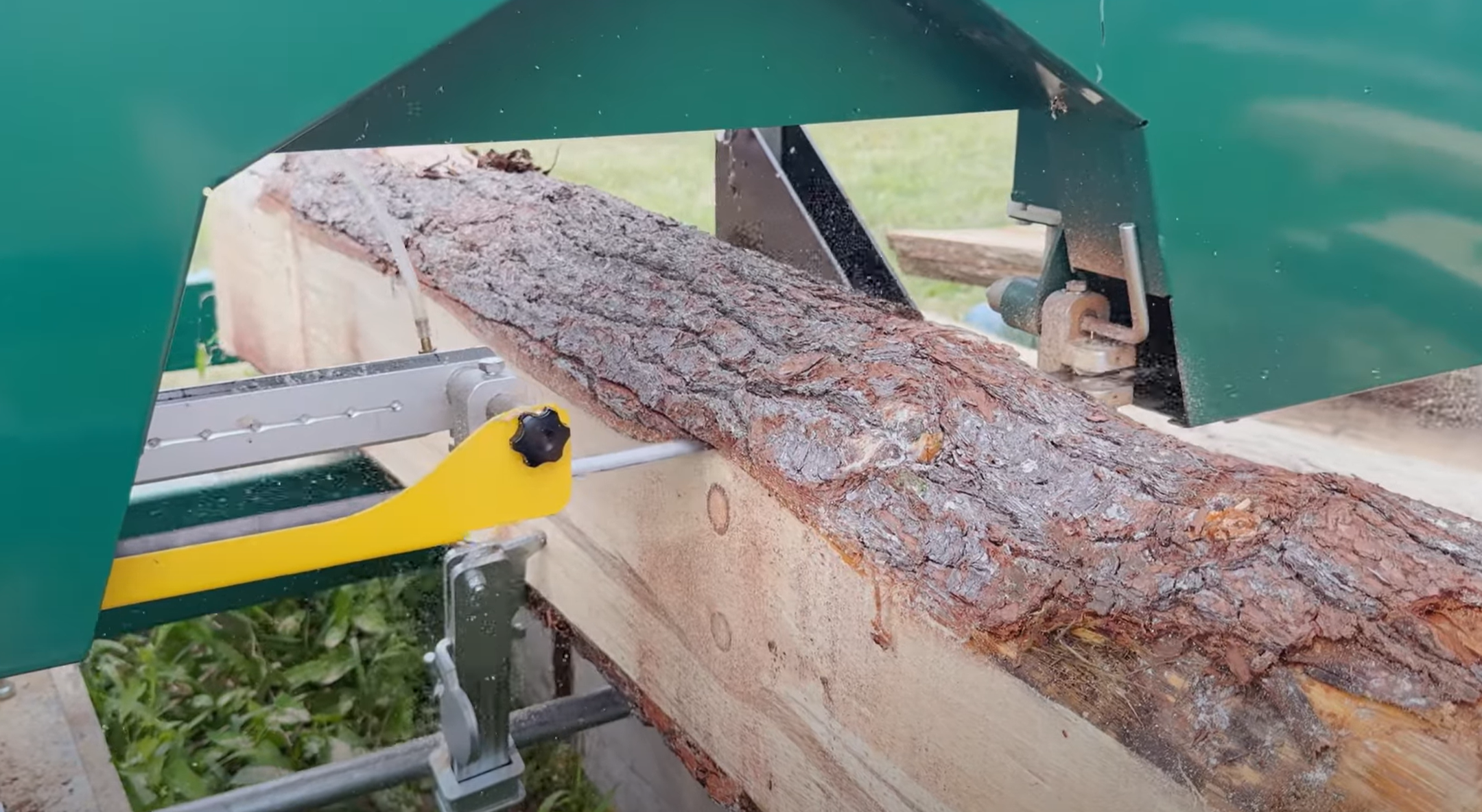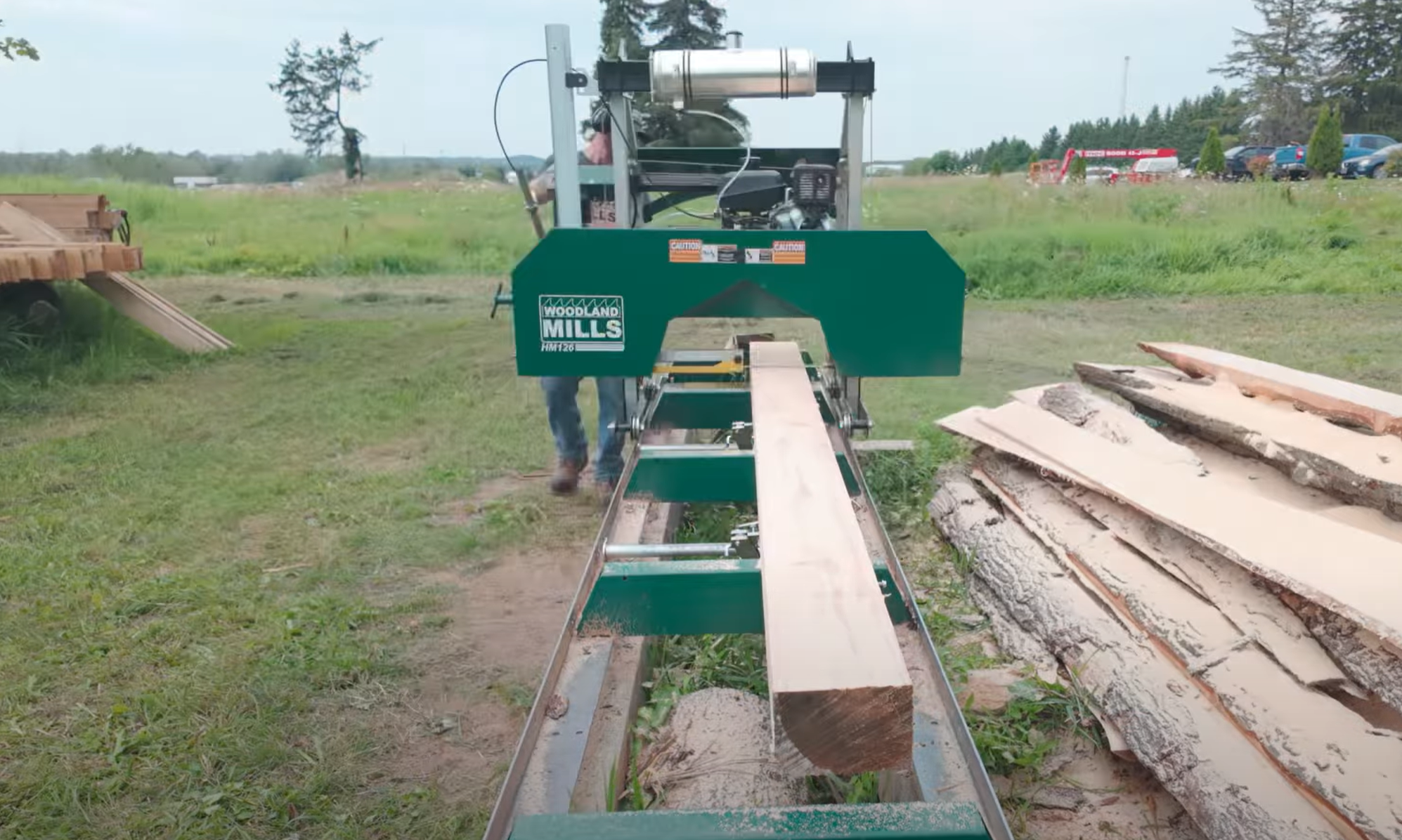How to Mill a Cant on a Portable Sawmill
Milling your own lumber is easy and the first step is to mill a cant
With a portable sawmill you have the power to mill your own lumber in whatever dimensions you need, making you less reliant on the lumber yard and retail prices for wood.
Because of that it's important to know how to mill a cant as this is the first step for milling dimensional lumber on your sawmill.
In this guide we'll go over the steps to turning your log from raw material into freshly cut boards.
What is a cant?
A cant is a log that’s been squared on all four sides using a sawmill. It gives you straight, clean edges to work with and removes the bark and irregularities. Whether you’re cutting 1x6s or 4x4s, every piece of dimensional lumber starts with a cant.
Think of the cant as your starting point, a blank canvas that determines what width your final boards will be. It's much easier to mill a cant than to mill slabs and trim them down to your desired width.
With that said, if you are interested in milling slabs then you can skip the cant step altogether.
Milling your cant
Step 1
We’ll begin by getting a log onto the mill.
The straighter and larger the log, the better quality and yield you’ll get from your cant. But that doesn’t mean you can’t work with smaller or imperfect logs, especially when you’re just starting out.
The more twisty and bendy the log, the more work you'll need to put into squaring it away and the more material which could go to waste from the off-cuts. Plan out your cuts before squaring away these logs and use your best judgement to try and square your cant with as little wasted material as possible.

Step 2
Next, we’ll align the log and take our first slab cut to create a flat surface. Sight down the log from the front of the mill and then lower/raise the saw head enough to get your starting point. You may also take a tape measure to gauge a consistent depth along the whole log that will give you a total flat cut.
With your first cut done you can use a cant hook to flip your log. You can either flip 180 degrees to flatten the bottom of the log, giving you two flat sides to work with, or flip 90 degrees to flatten the next side, giving you a straight 90 degree angle to work with. This is totally up to you. It may be easier however for handling to flip 180 degrees as you first start out milling.
On your second cut you'll want to start to consider what dimensions of boards you want out of your log and cut your log to size.
As you cut dimensions from your log don't forget to drop your log stops so you don't accidentally cut into them.

Step 3
We’ll rotate the log and repeat the process until all four sides are clean and squared. If you want to use your cant as a beam then you can refine it to its final dimensions here. If you want to turn it into dimensional lumber then continue with the following step:
Now you’ve got a cant ready to be sawed down into boards of your desired thickness. Just adjust the height of your sawhead and cut your first board. An 8x8 cant can give you anything from four 4x4s, 1x8s or even 2x4s.
Remember that if you're doing 2x4s that lumber you'd buy at the hardware store isn't exactly 2x4, it's 1.5x3.5 so your lumber will be slightly different from what you're used to. Alternatively you can cut your 2x4s so they're exactly the same dimensions that you'd get from the lumber yard.

Step 4
You've milled your cant and cut your boards and now you have a stack of lumber ready to dry and use for your next project.
That lumber will need to be stacked and stickered to ensure it doesn't warp. Check out our guide on stacking lumber to learn more about this process.
Depending on how you dry your lumber it may take more time to finish the final drying process. Once your wood has achieved the right moisture content you're ready to use it for your next project.

No you cant? Yes you can!
Remember, the cant is your foundation. Taking the time to square it up properly ensures your final boards are straight, consistent, and easier to work with, whether you’re building structures, furniture, fencing, or anything in between.
SHOP SAWMILLS
HM122
An entry-level sawmill packed with impressive features at a budget-friendly price. Designed for hobby sawyers or woodworkers looking for an economical solution to mill lumber.
HM126
One of the best-valued sawmills in the industry. A longstanding favourite that ensures smooth, accurate cuts. Perfect for hobby sawyers, entrepreneurs or seasoned woodworkers.
HM130MAX®
A wide capacity sawmill that produces stunning high-value live-edge boards. Loaded with features including our FULLCUT™ sawhead, RapidChange® blade system, auto lube, and more.
HM136MAX™
The ultimate solution for cutting wide live edge slabs, perfect for tabletops, counters, benches, and more. Our unique FULLCUT™ sawhead design ensures your logs' widest assets are left intact.
Join the Woodland Mills Community Facebook group. Search advice and insights from over 65,000 knowledgeable, supportive members.
- Pre-purchase considerations
- Sawmill set-up support
- Project inspiration photos and videos
- Community troubleshooting support
